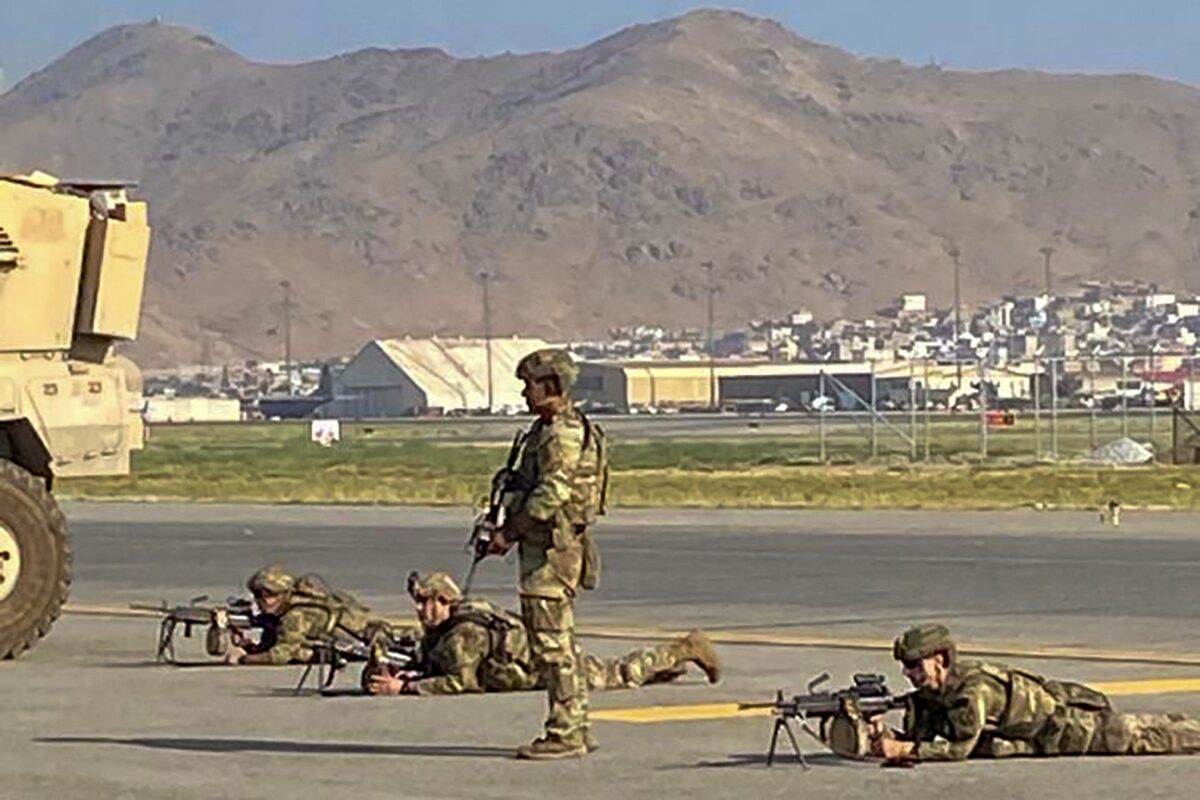Table of Contents
Introduction
The Asian continent is the largest on Earth, covering an area of 57 million square miles. It is one of the world’s most geographically and ethnically diverse regions, with 48 countries home to 60% of the global population.
This essay aims to discuss the goals and concerns that the United States of America has with the Asian region, which have shaped its dynamic foreign policy status since World War 2.
The United States In South Asia
Due in large part to its size and complexity in terms of both ethnic groups and strategic domains, the United States has long struggled in the South Asian region. The pursuit of stability, among other things, is the main goal of US policy in South Asia. This is an ambitious goal in a region that is dealing with interstate tensions, including those between two nuclear-armed states, insurgencies, cross-border terrorism, and other violent conflicts ranging from organised crime to Islamist militancy.
The US has gradually increased its influence in the area. After the Great War, US diplomacy was initially intended to replace British diplomacy with American diplomacy. However, it was not until the Cold War escalated and Communism engulfed China in 1949 that US relations with India and Pakistan became more pressing.
Geographically speaking, South Asia is an indispensable region for US engagement. South Asia is a gateway to China and the West Asian region, situated at the mouth of the Indian Ocean.
Due to US interest in utilising Pakistan’s military bases and establishing bilateral and multilateral defence agreements for West Asia, relations between the two countries have flourished. Pakistan joined the Southeast Asia Treaty Organisation (SEATO) and signed a Mutual Defence Accord with the United States in 1954.
Because of Indian PM Nehru’s support for non-alignment and dominance in Indian foreign policy circles, US relations with India weren’t always easy. Due to its closer proximity and the convergence of Nehruvian Socialism with that of the Soviet Union, India maintained cordial relations with the USSR even as it pushed for a greater degree of strategic autonomy.
Although the Americans maintained Afghanistan’s neutrality and offered a substantial aid programme as early as the 1950s, the US has the longest standing diplomatic relations with the country.
“Vital United States objectives are best served if Afghanistan remains neutral, independent, and not over-committed to the Soviet bloc,” according to US policy papers on Afghanistan from 1960.
Afghanistan became the front line of the Cold War when the Soviet Union invaded the country in 1979. In place of the previous American policy of development, democracy, human rights, and counter-proliferation in South Asia was a narrowly focused agenda to counter Soviet aggression.
Following the aforementioned events, Pakistan emerged as a front-line state and a crucial ally of the United States in containing the Soviet presence, which in turn paved the way for the rise of the Mujahideen, or rebels, in Afghanistan.
Present Situation
The region is experiencing largely three geopolitical shifts-
US Withdrawal from Afghanistan: After twenty arduous years of fighting the Taliban, which cost the US a couple of trillion dollars and more than 2000 American lives, the US military withdrew, leaving behind the most notable change in the region.

Because of the growing danger of destabilisation in the area, the US policy focus has diminished as a result of the US withdrawal from Afghanistan. The US has the chance to significantly contribute to regional connectivity initiatives like transport corridors and energy infrastructure thanks to its expanding perspective.
Asian Power Rebalance: India, along with a large portion of South Asia, is a key player in the policy of rebalancing Asia. Washington sees India as a crucial bulwark against China, which explains why.
Washington finds great comfort in the current Indian government’s “Act East” policy, which advocates a more active and robust approach in the Indo-Pacific than the previous administrations’ “Look East” policy. This is because it emphasises the shared desire of the US and India to rebalance the same region and counter China, their common adversary.
Terrorist Network Emergence: Washington is encouraged to stay in the region by the resurgence of international terror networks in the area. Though they pose a threat to regional security, the intensity and webbing of networks are not as strong as they were prior to 9/11.
These terror organisations now rely on their regional affiliates, which are dispersed throughout North Africa and West Asia, rather than functioning independently.
Rivals like China, who have expressed their development plans for the region in the form of the Belt & Road Initiative, outmanoeuvre the US despite its best efforts to stay relevant in the region by providing financial and military support to the regional players.
India is currently creating its own regional development plans and infrastructure, such as the Kaladan project and the Chabahar port in Southern Iran, in order to bypass its long-standing rivals China and Pakistan and connect to Central Asia.
Washington’s absence from the scene of action may be detrimental to its efforts in the region, even though these development projects will accomplish the larger goals that Washington had set for the area.
The United States In Central Asia
Following the collapse of the Soviet Union in 1991, three main goals dominated US foreign policy in Central Asia:
- Decreasing the arsenal of WMD that the former Soviet states acquired.
- Maintaining the newly independent Soviet Republics’ territorial integrity.
- Ensuring the region’s economic reliance on Russia’s energy sector in light of Russia’s monopoly over the construction of pipelines and transit routes for Central Asian gas and oil.
The United States of America continued a long-standing campaign to promote free-market economies, democratic governance, and regional economic integration. However, in the wake of the 9/11 attacks, American attitudes towards and involvement in the region underwent a significant shift.
Though interest in achieving the goal of political and economic reform persisted, the US gave military and security concerns top priority. From being an area of interest, Central Asia became a much larger priority in US strategy, serving as an afterthought to Afghan stabilisation efforts rather than taking centre stage.
At a time when Russia is preoccupied with its South Western front, the Americans will need to prioritise and define their diplomatic ties and relations with the region in the wake of the US withdrawal from Afghanistan.
Particularly now that China’s influence over the region is greater than that of the Central Asian Republics’ trade with Russia thanks to Xi Jinping’s ambitious Belt and Road Initiative (BRI), which has resulted in foreign investment, development projects, and trade relations.
The United States of America does not have strong economic, political, or social ties to the region, despite having led and implemented a number of audacious visions for its engagement in it. For these reasons, the United States of America needs to balance its interests and available resources while establishing a long-term, sustainable basis for its involvement in the region.
In addition to the weight of their interests in Central Asia, the Americans do not enjoy the geographic advantage that China and Russia do in the region.
In light of these facts, the United States of America needs to embrace an approach to offshore balancing in which it actively engages with the region as a partner and uses its political, economic, and security tools to counterbalance the geopolitical influence of its immediate neighbours.
The United States In West Asia
It wasn’t until the end of World War 2 that the US increased its strategic and political presence in West Asia. With the West Asian countries at the time, only trade and strategic military supplies were conducted.
International politics saw the emergence of a new power structure following World War II. The Truman Doctrine was established in 1947 as a result of the US and USSR replacing the two previous major European powers, Britain and France, who were crippled by severe economic hardship and were unable to continue playing their pre-war roles in the region.
Although the USSR was adamant about securing its southern borders along the Caucasus mountains, the US remained resolute in opposing any Soviet action that could jeopardise the interests of either the US or Britain in the area.
Key US Interests In The Region
Strategic Access to Oil in the Region: Oil served as the driving force behind the second industrial revolution, making it an invaluable resource for advancement. In order to control prices, it is also critical to maintain the flow of West Asian oil onto global markets.
Upholding Israeli Sovereignty: The US also has a stake in keeping Israel safe and secure in the region’s general unrest. Because Israel is a dependable ally of the United States in West Asia, supporting it protects US interests there.
Upkeep of US Military Infrastructure: The majority of the US military is located in oil-rich Arab countries near vital trade routes and choke points, which are used to sway trade and regional policy. The bulk of the infrastructure was built during the Cold War, and more recently, as a result of the radicalization of Islam in the area.
Controlling Islamic Organisations and Terrorism: Reducing terrorist activity is another crucial US interest in the area. When the Soviet Union invaded Afghanistan in 1979, the United States had backed the Mujaheddin. However, this US strategy backfired, and the country launched a “War on Terror” after 9/11. Since then, the US has been carrying out airstrikes and covert operations against terror organisations in the area.
With both short- and long-term objectives, US foreign policy in the region has been inconsistent. The US’s aforementioned regional interests highlight a crucial framework for comprehending the policy choices the US makes that are influenced by the West Asian region.



